What makes SonicTonic unique is its expertly crafted tonics. All you need to do is sit back, relax, plug in your headphones and let the relaxing sounds take you on a journey. You don’t need to learn anything, there’s no meditation involved, instead each and every tonic administers a good strong dose of Receptive Sound Therapy to help you manage stress, sleep better and focus more.
So, what is Receptive Sound Therapy and how can it help you to manage your stress, sleep better and put you into a better state of mind. We’re here to tell you all about it.
What is Receptive Sound Therapy?
Receptive Sound Therapy is the clinical use of recorded sound, music, or spoken word, or combination thereof which, when listened to, has beneficial physiological, psychological or social effects. There are also studies that show that Receptive Sound Therapy can improve concentration, boost motivation and increase energy.
SonicTonic uses 5 special ingredients in the various tonics: binaural beats, Isochronic tones, Solfeggio frequencies, ASMR, autosuggestion and music. Each blend has been carefully crafted to help reduce stress, improve sleep and ease psychological problems.
The history of Receptive Sound Therapy
Receptive Sound Therapy is nothing new, healing with sound is one of the oldest and most natural forms of healing known to man and has been used for hundreds of thousands of years as a way of soothing the mind and emotions.
In the ancient societies of Egypt, Greece and India, the use of sound and music for healing was a highly developed science, and the Aboriginal people of Australia have used the didgeridoo as a healing tool for at least 40,000 years.
In the past 70 years there has been extensive research done on the phenomenon, including the study conducted by Dr. David Trudeau in 1998. He used 18 Hz frequencies to treat patients with chronic fatigue syndrome (CFS) which resulted in patients reporting reduced depression and impulsivity along with increased energy and improved sleep.
Michael Hutchison also mentions this frequency in his book “MegaBrain”, which he says can be used for the purpose of increasing energy and motivation. Dr. Cary Howard also got similar results in his study in 1986, in which 12 students reported significantly reduced symptoms fatigue at the end of a seven-week course.
The techniques used in Receptive Sound Therapy, and in SonicTonic, have been created to bring about quick and long-lasting positive changes. With SonicTonic we address the two main aspects of Receptive Sound Therapy: psychological and neurological. Managing stress, burnout, depression and other conditions often requires a combination of these two approaches. Depression, for example, can be treated most effectively by increasing the release of neurotransmitters in the brain, such as serotonin.
The Neurological Aspect: Brainwave Entrainment
Reading brainwave patterns can tell you a lot about our everyday lives. For example, a person’s brainwave pattern can show if they are tired, full of energy, or feeling focused. Brainwave patterns can also show if someone is suffering with depression, anxiety and a host of other disorders.
Brainwave Entrainment is a technique whereby the brain is coaxed into a certain state through use of pulsing light, sound or electromagnetic fields. Through simple changes and the optimisation of specific frequencies, a huge range of problems can be dramatically reduced or eliminated. For example, memory, concentration, and mental speed can be all improved dramatically thanks to brainwave stimulation. What’s more, sleep and deep stages of meditation can be initiated and headaches can be reduced through brainwave entrainment and it can release helpful chemicals such as growth hormone and serotonin.
The Psychological Aspect: Suggestions, Visualisations and Hypnosis
For problems that can’t be solved by Brainwave Entrainment alone, there are a number of other proven sound-based psychological techniques that can be used. Suggestions (affirmations) and visualisation techniques are great for overcoming anxiety, quitting smoking, losing weight, boosting self-esteem, performance and motivation – and much more.
Hypnosis, for example, is a well-known psychological technique. The task of the hypnotist is primarily to relax the patient to bring his mind into a receptive state (the so-called hypnotic trance). The hypnotist then uses a series of suggestions in the form of sentences or commands, such as, “You are self-confident and self-determined!. When your mind is in a receptive state, suggestions and other psychological techniques (such as visualisations) can have a quick and dramatic effect on your thinking, behaviour and emotional state.
SonicTonic combines sounds that influence brainwaves to help you manage stress, sleep better and focus more, along with autosuggestion that can help put your mind into a receptive state. Why not try out our tonics next time you’re feeling stressed. You’ll be surprised what Receptive Sound Therapy can do for you.
Disclaimer: Whilst the Receptive Sound Therapy methods used in SonicTonic have provided many people with a tool to control, reduce and even eliminate mind-based problems, SonicTonic does not claim to be a legally approved medical intervention or a replacement for a therapy or medication.
Further Reading
Frederick, J. A., Lubar, J. F., Rasey, H. W., Brim, S. A., & Blackburn, J. (1999). Effects of 18.5 Hz auditory and visual stimulation on EEG amplitude at the vertex. Journal of Neurotherapy, 3(3-4), 23-28.
Gontkovsky, S. T., & Montgomery, D. D. (1999, June). The physiological response to” beta sweep” entrainment. In APPLIED PSYCHOPHYSIOLOGY AND BIOFEEDBACK (Vol. 24, No. 2, pp. 133-133).
Hammond, D. C. (2001). Treatment of chronic fatigue with neurofeedback and self-hypnosis. NeuroRehabilitation, 16(4), 295-300.
Howard CE, Graham LE, 2nd, Wycoff SJ. A comparison of methods for reducing stress among dental students. J Dent Educ. 1986;50(9):542-544
Hutchison, M. (1986). Megabrain: New tools and techniques for brain growth and mind expansion. New York: Beech Tree Books.
Trudeu, D. (1999). A trial of 18 Hz Audio-Visual Stimulation (AVS) on Attention and Concentration in Chronic Fatigue Syndrome (CFS). Presented at the Society for Neuronal Regulation.











